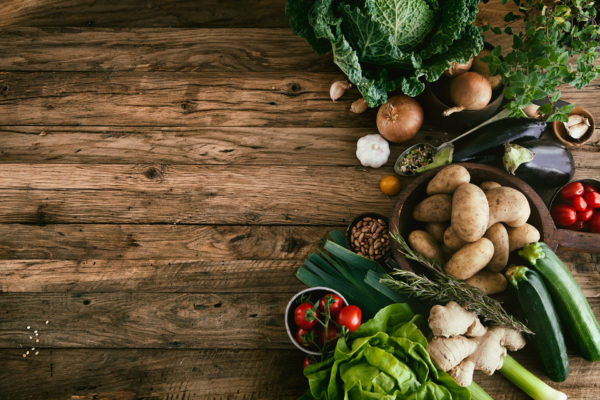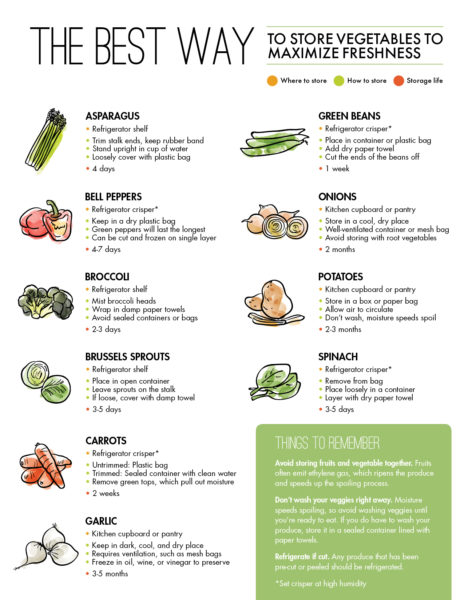
Let’s face it — few things are worse than seeing a bounty of your favorite fresh produce go to waste because you didn’t know the right way to store or freeze them.
How you purchase your produce could have an impact on your storage needs. Community Supported Agriculture–or a system where members pay a farmer in turn for a share of produce–is becoming more popular as Americans are supporting locally-grown farming. There are about 6,000 CSA groups in the U.S., a number that has almost doubled since 2009. Members often receive fresh vegetables in large installments, meaning they have to keep bulk veggies fresher, longer.
To help you maximize the life of your favorite produce as part of an organized kitchen, we put together the best way to store vegetables (and a printable to keep on your fridge, too).
Things to Remember About Storing Vegetables
Not all vegetables are created equal, but it’s best to follow certain practices when it comes to storing them.
- Avoid storing fruits and vegetables together. Many fruits emit ethylene gas, which ripens the produce and speeds up the spoiling process. Some of the biggest culprits? Apricots, apples, avocados, bananas, and tomatoes.
- Don’t wash your veggies right away. Moisture speeds spoiling, so avoid washing vegetables until you’re ready to eat. If you do have to wash your produce, store it in a sealed container lined with paper towels.
- Refrigerate if cut. Any produce that has been pre-cut or peeled should be refrigerated. Just make sure your fridge is clean and organized before adding any extra clutter.
How to Keep Vegetables Fresh
Asparagus

Where to store: Refrigerator shelf
Storage life: 4 days
If you’re not going to eat your asparagus right away, trim the bottoms of the stalks, leaving the rubber band on. Then, stand the asparagus upright in a cup of water (a glass measuring cup works well). To protect it, loosely cover the stalk with a plastic bag. Switch out the water if it starts to look a little cloudy. When you’re ready to prepare the asparagus, re-trim the ends for maximum freshness.
Freezing: Before freezing asparagus, it’s good to blanch it. To blanch, place the asparagus in boiling water for two to five minutes. Immediately following, transfer the asparagus to a bowl of ice water for the same amount of time. When drained, place your asparagus in a plastic bag or container and freeze.
Bell Peppers
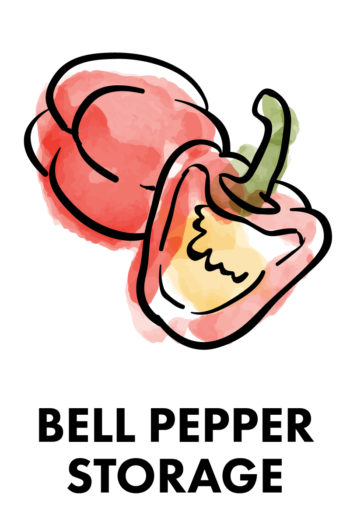
Where to store: Refrigerator crisper (high humidity)
Storage life: 4-7 days
Moisture causes peppers to rot, so keep them unwashed and dry. For maximum crunchiness, store them whole in a plastic bag in the crisper at a high humidity level (the plastic bag will protect them from the moisture). If the pepper has been cut, wrap the pieces in a paper towel, place them in a container and add about a half inch of cold water before sealing. Keep in mind that red and yellow peppers will last about four to five days, while green will last about a week.
Freezing: To prep your peppers to be frozen, wash them and remove all seeds and membranes. Then cut the peppers, arranging them in a single layer on a tray and freeze for about an hour. Once frozen, transfer the pepper into an airtight container and place back in the freezer.
Broccoli
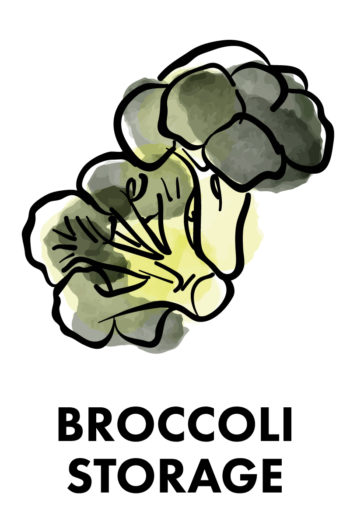
Where to store: Refrigerator shelf
Storage life: 2-3 days
Fresh broccoli spoils quickly, so it’s best to eat it sooner rather than later. Before storing, mist unwashed heads with water (excess moisture promotes mold). Then, wrap them loosely in damp paper towels, placing them in the refrigerator. Broccoli requires circulation, so don’t store it in a sealed environment.
Freezing: Fresh broccoli should be steamed or blanched before freezing. Start by washing the head and cutting it into florets. Boil the heads for five minutes, place them in ice water for the same time and keep them in sealed bags.
Brussels Sprouts
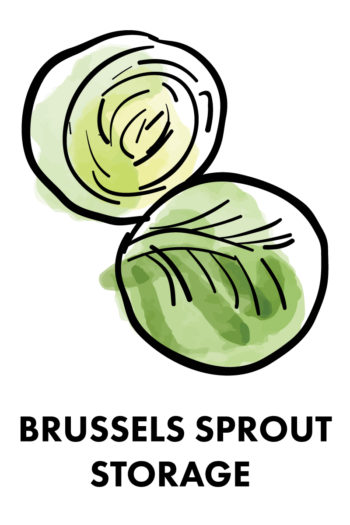
Where to store: Refrigerator shelf
Storage life: 3-5 days
If you bought your Brussels sprouts loose, place them in a container and cover them with a damp paper towel. If the sprouts are still on the stalk, leave them on and store them the same way, removing pieces as needed. The longer Brussels sprouts are stored, the stronger they’ll taste.
Freezing: To prepare your Brussels sprouts for freezing, give them a good wash and trim off any coarse outer coarse leaves. Then, blanch them for about four minutes. Once dry, keep in an air-tight container.
Carrots
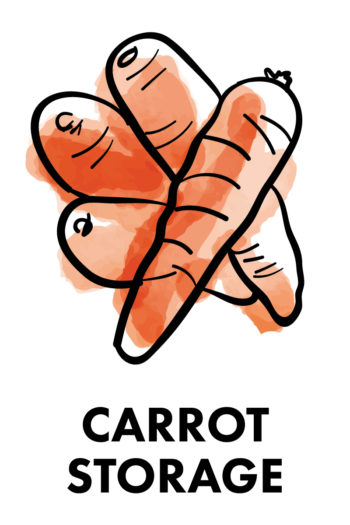
Where to store: Refrigerator crisper (high humidity)
Storage life: 2 weeks
The green tops of carrots draw out the vegetable’s moisture, so it’s best to cut them off as soon as possible. If the tops have been cut off and the rest of the carrots are left whole, place them in a plastic bag and leave in the fridge. If you choose to remove the top and cut the carrots into smaller pieces, place them in a sealed container with clean water, changing out the water every few days.
Freezing: Once carrots have been washed and peeled, they’re ready to be blanched. For smaller carrots, blanch for five minutes, for dices carrots, blanch for two minutes. Once they’re dry, freeze in a sealed bag.
Garlic
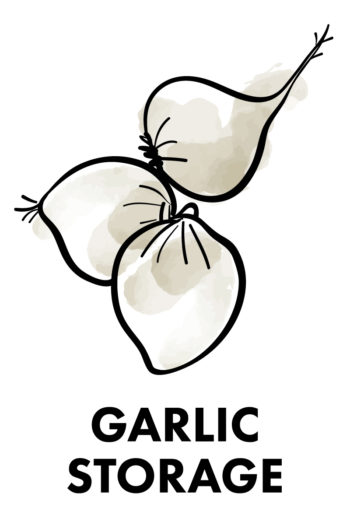
Where to store: Kitchen cupboard or pantry
Storage life: 3-5 months
Garlic is very sensitive, so store it in a dark place that is also cool and dry, such as a cupboard. To give garlic the ventilation it requires, store it in a mesh bag. No mesh bag? Create your own version by using a hole punch to create holes in a brown paper bag. Limited airflow around your garlic will induce sprouting.
Freezing: Garlic can be frozen a number of ways. One option is to chop garlic and wrap it tightly in a plastic bag, using a grate to break it off as needed. A second is to freeze the garlic unpeeled, removing cloves as needed. Lastly, you can choose to freeze it in oil, wine or vinegar to preserve and prepare for cooking.
Green Beans
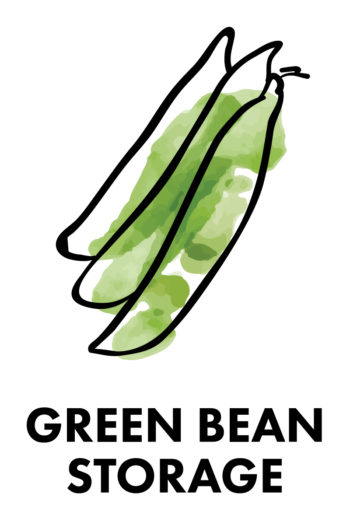
Where to store: Refrigerator crisper (high humidity)
Storage life: 1 week
To keep green beans crunchy, place them in a container or plastic bag in the crisper at a high humidity level. Since they don’t do well in wetness, it helps to add a dry paper towel that will absorb any extra moisture. Before preparing your green beans, be sure to cut off the ends.
Freezing: To start the process, cut the ends off each green bean. If you prefer your beans in bite-sized pieces, cut them to your desires length. Blanch medium green beans for three minutes, allowing the same time to cool and drain. Pack dry beans in a freezer bag, pushing out any extra air. If necessary, use freezer tape to provide a stronger seal.
Onions

Where to store: Kitchen cupboard or pantry
Storage life: 2 months
Similar to garlic, onions should be stored in a cool, dry place. They should be kept in a well-ventilated container or mesh bag, and away from root vegetables (such as carrots, rutabagas, beets, etc.), since they’ll make each other spoil faster. Onions also need a lot of circulation, so avoid stacking them on top of one another.
Freezing: Onions don’t need to be blanched, but should be washed, peeled and chopped before freezing. Then, place them in a single layer on a cookie sheet to freeze for a few hours. Once frozen, they can be thrown in a freezer bag. This process prevents clumping, so you don’t have to thaw all of the onions at once.
Potatoes

Where to store: Kitchen cupboard or pantry
Storage life: 2-3 months
Contrary to popular belief, potatoes should not be washed before storing them — as moisture speeds the spoiling process. Instead, use a basket for storage, placing them in a dark area that allows the air to circulate. While similar, potatoes should not be kept with onions and garlic, since they will accelerate each other’s spoilage.
Freezing: Fresh potatoes are best for freezing, so be sure to start the freezing process right away. Begin by peeling and washing the potatoes, removing any bruises if necessary. Then cut the potatoes into sticks or cubes (depending on your preference), blanching for about five minutes. After they’re cooled and drained, pack them in freezer bags with a half inch of headspace. If you prefer to freeze potatoes whole, boil them with the skins on. Once cooked, remove skins, wrap in plastic and store in a freezer bag.
Spinach
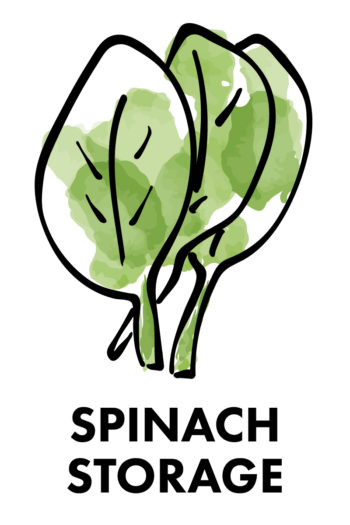
Where to store: Refrigerator crisper (high humidity)
Storage life: 3-5 days
Take pre-washed greens and remove them from your bag, placing them loosely in a container. Then, place down a paper towel before adding the next layer, repeating until full (note: there should be plenty of space in the box). The hard container protects the leaves from bruising, and the towels absorb excess moisture that leads to wilting.
Freezing: If you’re going to use the frozen spinach within a few months, you can freeze it raw. Otherwise, be sure to blanch your leaves for two minutes. Once cooled, dry spinach with paper towels or a salad spinner before placing in a freezer bag. Be sure to remove all air from the bag to avoid freezer burn.
We hope you enjoyed this produce lesson and learned something new along the way. By understanding the best way to store vegetables, you’ll be sure to maximize their freshness. Happy storing!
Did we miss any veggie storage tips? Let us know in the comments below, and don’t forget to download your free printable for your fridge!
